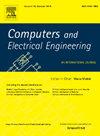基于时空自我注意的远程心率测量
IF 4
3区 计算机科学
Q1 COMPUTER SCIENCE, HARDWARE & ARCHITECTURE
引用次数: 0
摘要
远程光电容积脉搏波仪(rPPG)是一种非接触式测量心率的技术,由于其方便和非侵入性而获得了广泛的关注。然而,rPPG信号本身就很弱,并且在面部区域表现出区域差异。准确的心率估计需要分析长时间视频序列(超过100帧)。为了解决这些问题,本文提出了一种新的基于自注意机制的深度神经网络(DNN),即时空自注意网络(STSA-Net)。这种无卷积深度神经网络主要采用变压器架构。最初,差分处理应用于输入视频,以强调帧与帧之间的变化,并放大微妙的rPPG信号。这些差分帧随后通过空间自注意编码模块传递。该模块对面部区域的空间依赖性进行建模,使网络能够专注于信息区域,同时抑制不相关的噪声。在空间编码之后,特征由时间自注意模块处理,该模块使用基于转换器的技术捕获帧之间的长期依赖关系。通过综合实验,包括消融研究、数据库内评估和跨数据库比较,使用三个基准数据库:UBFC-RPPG、PURE和MAHNOB-HCI,对所提出的方法进行了严格的评估。我们的模型展示了与最先进的远程心率测量方法相当的性能,在数据库内实验中,PURE上的MAE为0.4 bpm, UBFC上的MAE为0.48 bpm, MAHNOB-HCI上的MAE为3.75 bpm,在跨数据库实验中,该模型的MAE为1.36 bpm (UBFC→PURE)和1.27 bpm (PURE→UBFC)。此外,在PURE数据库中发现了一个异常值,并分析了其原因和影响。本文章由计算机程序翻译,如有差异,请以英文原文为准。
Remote heart rate measurement based on spatial–temporal self-attention
Remote photoplethysmography (rPPG), a non-contact technique for measuring heart rate, has gained significant traction due to its convenience and non-invasive nature. However, rPPG signals are inherently weak and exhibit regional variations across facial areas. Accurate heart rate estimation necessitates analysis of extended-duration video sequences (exceeding 100 frames). To address these challenges, this paper proposes a novel deep neural network (DNN) based on self-attention mechanism, named spatial–temporal self-attention network (STSA-Net). This convolution-free DNN primarily adopts a transformer architecture. Initially, differential processing is applied to the input video to accentuate frame-to-frame variations and amplify subtle rPPG signals. These differential frames are subsequently passed through a spatial self-attention encoding module. This module models spatial dependencies within facial regions, allowing the network to focus on informative areas while suppressing irrelevant noise. Following spatial encoding, the features are processed by a temporal self-attention module, which captures long-term dependencies across frames using transformer-based techniques. The proposed method is rigorously evaluated through comprehensive experiments, including ablation studies, intra-database evaluations, and cross-database comparisons, using three benchmark databases: UBFC-RPPG, PURE, and MAHNOB-HCI. Our model demonstrates performance on par with state-of-the-art methods for remote heart rate measurement, achieving a MAE of 0.4 bpm on PURE, 0.48 bpm on UBFC, and 3.75 bpm on MAHNOB-HCI in intra-database experiments, and 1.36 bpm (UBFC PURE) and 1.27 bpm (PURE UBFC) in cross-database experiments. Additionally, an outlier in the PURE database is identified, and its cause and impact are analyzed.
求助全文
通过发布文献求助,成功后即可免费获取论文全文。
去求助
来源期刊

Computers & Electrical Engineering
工程技术-工程:电子与电气
CiteScore
9.20
自引率
7.00%
发文量
661
审稿时长
47 days
期刊介绍:
The impact of computers has nowhere been more revolutionary than in electrical engineering. The design, analysis, and operation of electrical and electronic systems are now dominated by computers, a transformation that has been motivated by the natural ease of interface between computers and electrical systems, and the promise of spectacular improvements in speed and efficiency.
Published since 1973, Computers & Electrical Engineering provides rapid publication of topical research into the integration of computer technology and computational techniques with electrical and electronic systems. The journal publishes papers featuring novel implementations of computers and computational techniques in areas like signal and image processing, high-performance computing, parallel processing, and communications. Special attention will be paid to papers describing innovative architectures, algorithms, and software tools.
 求助内容:
求助内容: 应助结果提醒方式:
应助结果提醒方式:


